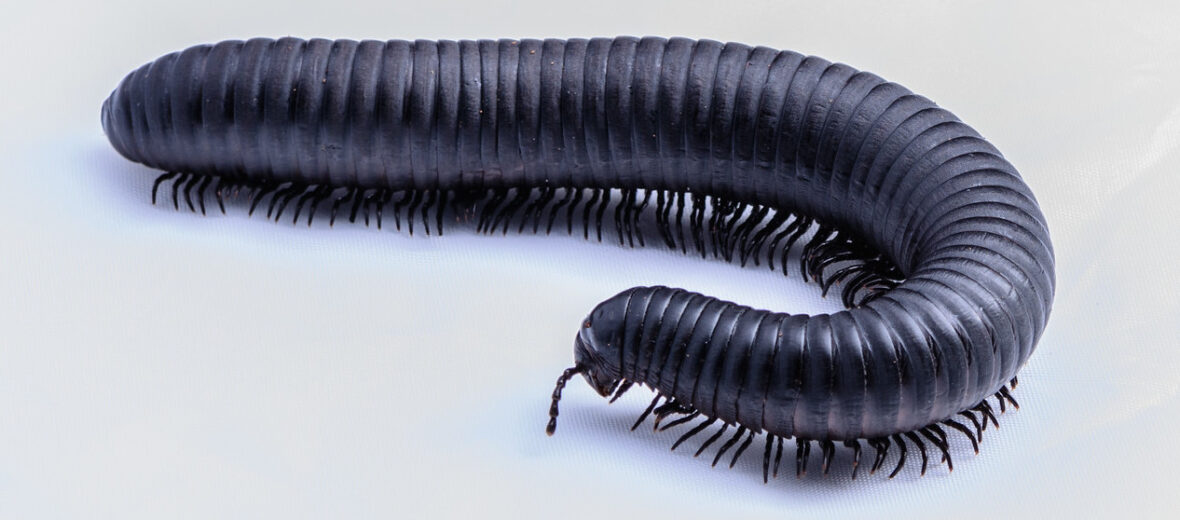
The giant African millipede, aka shongololo, contrary to popular belief only has up to 400 legs. Even though the name “millipede” means a thousand feet. They are the largest known species of millipedes in the world and there are 10,000 known species! These interesting critters make their home in the rain forests of subtropical western Africa. Giant African millipedes are listed as Least Concern by the IUCN.
First the Stats…
Scientific name: Archispirostreptus gigas
Length: Up to 12 inches
Lifespan: Up to 7 years
Now on to the Facts!
1.) Males have a gap at their 7th segment and females don’t.
2.) A giant African millipede has 30 – 40 segments, with 4 legs per segment. African millipedes have 2 antennae and simple eyes called ocelli. Their mouth is called a maxilla.
3.) They are detritivores (eat decaying matter off the forest floor). They also chew on rocks to add calcium to their diet, for exoskeleton growth.
4.) Millipedes breathe through tiny pores that run down the length of their body, called spiracles. This is what they use to breathe with.
5.) Their excrement (poop) is full of beneficial nutrients and serves as new soil for the forest.
But wait, there’s more on the giant African millipede!
6.) African millipedes are nocturnal (active at night).
7.) These millipedes emit pheromones to attract a partner.
Did you know…?
Giant African millipedes also have a culture of tiny mites that crawl all over their bodies looking to eat microscopic bacteria and germs, helping to keep the millipede clean.
8.) After a pair find each other the male will walk alongside the female. If she is receptive to mating she will allow him to slip in underneath her and they will wrap around each other a few times and seal the deal.
9.) When born, young millipedes only have 3 segments. As they moult, new segments are added. Their first moult happens only 12 hours after birth.
10.) They don’t have very good vision, so they depend on vibrations and chemosensory organs to detect their world around them, via chemical stimuli.
11.) Handling one will usually result in a red staining of your hands. This is their chemical defense. In some millipedes, this chemical is actually cyanide and can make you very sick or even kill a predator.
Now a Short Giant African Millipede Video!
Also, check out the Critter Science YouTube channel. Videos added frequently!
Want to suggest a critter for me to write about? Let me know here.
Learn more about all kinds of cool critters, right here!
Some source material from: Wikipedia and IUCN.



